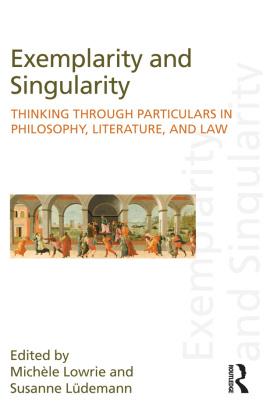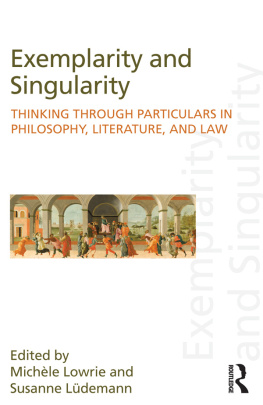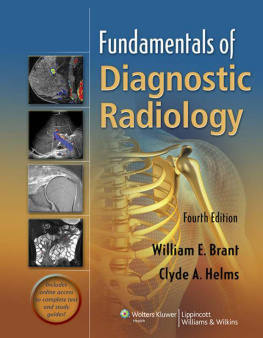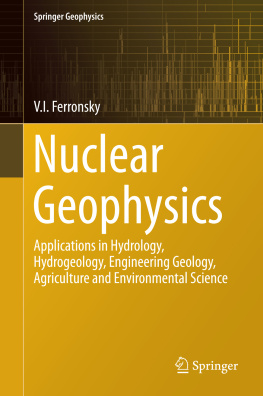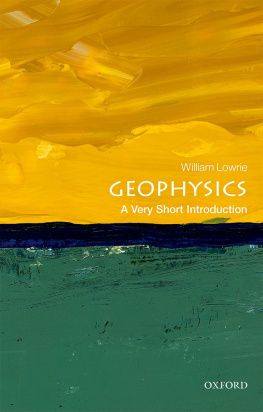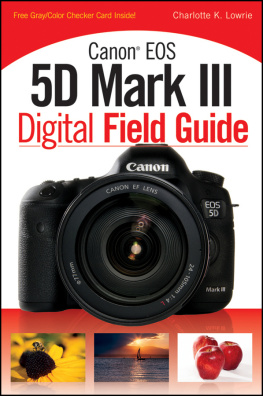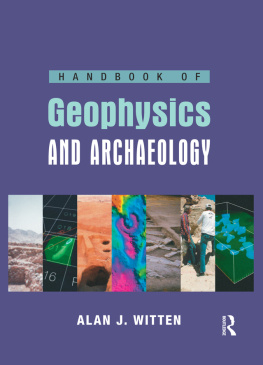William Lowrie - Fundamentals of Geophysics
Here you can read online William Lowrie - Fundamentals of Geophysics full text of the book (entire story) in english for free. Download pdf and epub, get meaning, cover and reviews about this ebook. year: 2020, publisher: Cambridge University Press, genre: Children. Description of the work, (preface) as well as reviews are available. Best literature library LitArk.com created for fans of good reading and offers a wide selection of genres:
Romance novel
Science fiction
Adventure
Detective
Science
History
Home and family
Prose
Art
Politics
Computer
Non-fiction
Religion
Business
Children
Humor
Choose a favorite category and find really read worthwhile books. Enjoy immersion in the world of imagination, feel the emotions of the characters or learn something new for yourself, make an fascinating discovery.

- Book:Fundamentals of Geophysics
- Author:
- Publisher:Cambridge University Press
- Genre:
- Year:2020
- Rating:4 / 5
- Favourites:Add to favourites
- Your mark:
- 80
- 1
- 2
- 3
- 4
- 5
Fundamentals of Geophysics: summary, description and annotation
We offer to read an annotation, description, summary or preface (depends on what the author of the book "Fundamentals of Geophysics" wrote himself). If you haven't found the necessary information about the book — write in the comments, we will try to find it.
Fundamentals of Geophysics — read online for free the complete book (whole text) full work
Below is the text of the book, divided by pages. System saving the place of the last page read, allows you to conveniently read the book "Fundamentals of Geophysics" online for free, without having to search again every time where you left off. Put a bookmark, and you can go to the page where you finished reading at any time.
Font size:
Interval:
Bookmark:
Fundamentals of Geophysics
Third Edition
This enduringly popular undergraduate textbook has been thoroughly reworked and updated, and now comprises twelve chapters covering the same breadth of topics as earlier editions, but in a substantially modernized fashion to facilitate classroom teaching.
Covering both theoretical and applied aspects of geophysics, clear explanations of the physical principles are blended with step-by-step derivations of the key equations and over 400 explanatory figures to explain the internal structure and properties of the planet, including its petroleum and mineral resources. New topics include the latest data acquisition technologies, such as satellite geophysics, planetary landers, ocean-bottom seismometers, and fiber optic methods, as well as recent research developments in ambient noise interferometry, seismic hazard analysis, rheology, and numerical modeling all illustrated with examples from the scientific literature.
Student-friendly features include separate text boxes with auxiliary explanations and advanced topics of interest; reading lists of foundational, alternative, or more detailed resources; end-of-chapter review questions; and an increased number of quantitative exercises. Completely new to this edition is the addition of computational exercises in Python, designed to help students acquire important programming skills and develop a more profound understanding of geophysics.
William Lowrie is Professor Emeritus of Geophysics at the Institute of Geophysics at ETH Zrich, Switzerland, where he taught geophysics and carried out research in rock magnetism and paleomagnetism. He graduated from the University of Edinburgh in 1960 with first class honors in physics, before completing a masters degree in geophysics at the University of Toronto and a doctorate at the University of Pittsburgh. He has been President of the European Union of Geosciences (19871989) and Section President and a council member of the American Geophysical Union (20002002). He is a fellow of AGU and a member of the Academia Europaea.
Andreas Fichtner is Professor of Geophysics at ETH Zrich. He received his PhD in 2010 from the University of Munich. His principal research interests include the development and application of methods for full seismic waveform inversion, resolution analysis in tomography, earthquake source inversion, seismic interferometry, and inverse theory. For his work, he received the Keiiti Aki Award from the American Geophysical Union, the Early Career Scientist Award from the International Union of Geodesy and Geophysics, and the Hoffmann Prize from the Bavarian Academy of Sciences. He is a former Fulbright scholar and a current member of the Young Academy of Europe.
Fundamentals of Geophysics
Third Edition
William Lowrie
Swiss Federal Institute of Technology Zrich
Andreas Fichtner
Swiss Federal Institute of Technology Zrich


University Printing House, Cambridge CB2 8BS, United Kingdom
One Liberty Plaza, 20th Floor, New York, NY 10006, USA
477 Williamstown Road, Port Melbourne, VIC 3207, Australia
314321, 3rd Floor, Plot 3, Splendor Forum, Jasola District Centre, New Delhi 110025, India
79 Anson Road, #0604/06, Singapore 079906
Cambridge University Press is part of the University of Cambridge.
It furthers the Universitys mission by disseminating knowledge in the pursuit of education, learning, and research at the highest international levels of excellence.
www.cambridge.org
Information on this title: www.cambridge.org/9781108492737
DOI: 10.1017/9781108685917
First edition Cambridge University Press 1997
Second edition W. Lowrie 2007
Third edition Cambridge University Press 2020
This publication is in copyright. Subject to statutory exception and to the provisions of relevant collective licensing agreements, no reproduction of any part may take place without the written permission of Cambridge University Press.
First published 1997
Second edition 2007
9th printing 2017
Third edition 2020
Printed in the United Kingdom by TJ International Ltd, Padstow Cornwall 2020
A catalogue record for this publication is available from the British Library.
ISBN 978-1-108-49273-7 Hardback
ISBN 978-1-108-71697-0 Paperback
Additional resources for this publication at www.cambridge.org/FoG3e.
Cambridge University Press has no responsibility for the persistence or accuracy of URLs for external or third-party internet websites referred to in this publication and does not guarantee that any content on such websites is, or will remain, accurate or appropriate.
This book is dedicated to Marcia and Carolin
Widespread access to powerful computers, advances in instrumentation, and the expansion of remote sensing of properties of the Earth and some other planets from space missions have resulted in considerable advancements in many fields of geophysics in the years since the second edition of this book was published. During this time the continual spread of internet-related education has made online availability of teaching materials increasingly desirable. These developments encouraged us to prepare this third edition of Fundamentals of Geophysics , and to provide interactive involvement for students in solving problems online in the form of Jupyter Notebooks.
For this edition, William Lowrie, the author of the earlier editions, has been joined by Andreas Fichtner. Both authors are professors of geophysics at the Swiss Federal Institute of Technology (ETH Zrich), with different fields of specialization. The collaboration adds expertise and a fresher approach to the different disciplines covered in the book.
Geophysics is often taught as two topics, with titles like general and applied. In fact these are two sides of the same coin, and they often benefit from advances in instrumentation and analysis developed in each others domain. As in the earlier editions, we therefore continue to describe the principal methods in both fields.
It is not possible to explain briefly every recent advancement in an introductory textbook, but we have included some of the most striking. These include the geophysical results from space missions to other bodies in the solar system (e.g., Mercury, Mars, Jupiter, and Pluto). There has been great progress in remotely sensing the gravitational and magnetic fields of our own planet from orbiting satellites. A new section is added to deal with space geodesy, in which we explain some of the developments that have revolutionized research in geodesy and gravity. New seismic methods for understanding the Earths internal structure are described, for example by analyzing ambient noise. The danger presented by earthquakes can be estimated by probabilistic seismic hazard. Advancements in seismic tomography and the numerical modeling of geophysical processes (e.g., mantle dynamics) have illuminated and posed new questions about our understanding of the Earths interior. Text boxes are used to handle some topics in greater detail than is needed in the body of the text, which, as in the earlier editions, emphasizes fundamental principles in the individual disciplines.
The new structure of the book divides the field of geophysics into 12 chapters, with a little overlap between some of them. In order to keep the price to students as low as possible, the authors decided to continue to use black-and-white figures, avoiding the use of more expensive color. However, as the books title claims, its emphasis is on teaching the fundamental principles and these (mostly) do not change. If necessary, the teacher is in a position to enlarge upon the illustrations with colored examples, of which there is abundant choice in the professional literature. The website provides the solutions to the exercises at the end of each chapter for teachers who want to use them.
Font size:
Interval:
Bookmark:
Similar books «Fundamentals of Geophysics»
Look at similar books to Fundamentals of Geophysics. We have selected literature similar in name and meaning in the hope of providing readers with more options to find new, interesting, not yet read works.
Discussion, reviews of the book Fundamentals of Geophysics and just readers' own opinions. Leave your comments, write what you think about the work, its meaning or the main characters. Specify what exactly you liked and what you didn't like, and why you think so.

